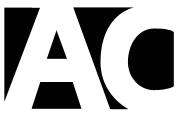I’m not originally a copywriter by trade. That’s a common misconception.
Things have changed in recent years, largely because the consistency and quality of writing needed for even a local website to compete has increased dramatically. Content needs to be clever, witty, convincing, and converting.
So I spent the better part of the years since the first Google Panda update reading up on what drives human behavior, what triggers certain actions, and how I can make my copy not just convincing, but compulsively readable.
One of the most important tips I’ve discovered yet, and one that I WISH I had five years ago, was to create a swipe file.
What Is a Swipe File?
Simply put, a swipe file is a folder or file where you put all the cool, engaging, clever, and clickable headlines, graphics, ads, turns of phrase and calls to action you find while surfing the web.
It’s a sort of cheat sheet copywriters turn to when they want to test a new headline strategy or when they can’t think of the perfect way to talk to dog owners.
But it isn’t just for copywriters.
Sure it’s a must have if your sole job is to get someone to buy your client’s products or services, but a good swipe file can be immensely valuable in many other situations as well.
The Value of a Swipe File to a Freelancer
Here’s a quick look at just a few of the things I’ve been collecting in my swipe file for the last couple of years and how they have made me a better writer:
- Location Descriptions – One of the toughest things to write is a location-targeted service page for a local company. Not because they are necessarily hard, but because we’re often writing 10-20 of them. How do we make them different enough to stand on their own merits? That’s where a good swipe file filled with creative ideas for location pages comes in handy.
- Industry Terminology – While researching, I will frequently copy and paste conversations, quotes, and service pages from other sites, blogs, and forums to my swipe file for reference as I absorb the style of writing and speech patterns used by other businesses in that field.
- Common Fears/Concerns – I can guess what people are worried about in a given industry, or I can go out and read what they’re afraid of. Again, forums are a hugely useful research tool for this.
- Commonly Cited Links – If certain websites and resources keep popping up I want to know about it. So I’ll keep a list of links and resources that are frequently referenced in a given industry.
- Stories I Like – A great story is a powerful tool. If I read a story that really resonates – either through shares and comments or just because I like it – I’ll copy it for future reference.
I rarely, if ever reference or use any of the content in my swipe file – only ever if I can cite it and not diminish the authority of what I’m writing.
But by having this file and spending time every day when I’m researching (or wasting time on Facebook), I almost never get writer’s block.
If I’m not sure what to write, I reference my swipe file.
There are ideas here. Strategies for making something clever. Ways to talk to prospects that I don’t necessarily have a personal relationship with. Engaging stories I can get inspiration from.
The bottom line is that no writer is in a bubble. Everything you write is influenced by something you’ve read.
Recognize this, gather those things together and use them to augment your writing whenever you feel stuck. You’ll get more out of yourself by doing so.





